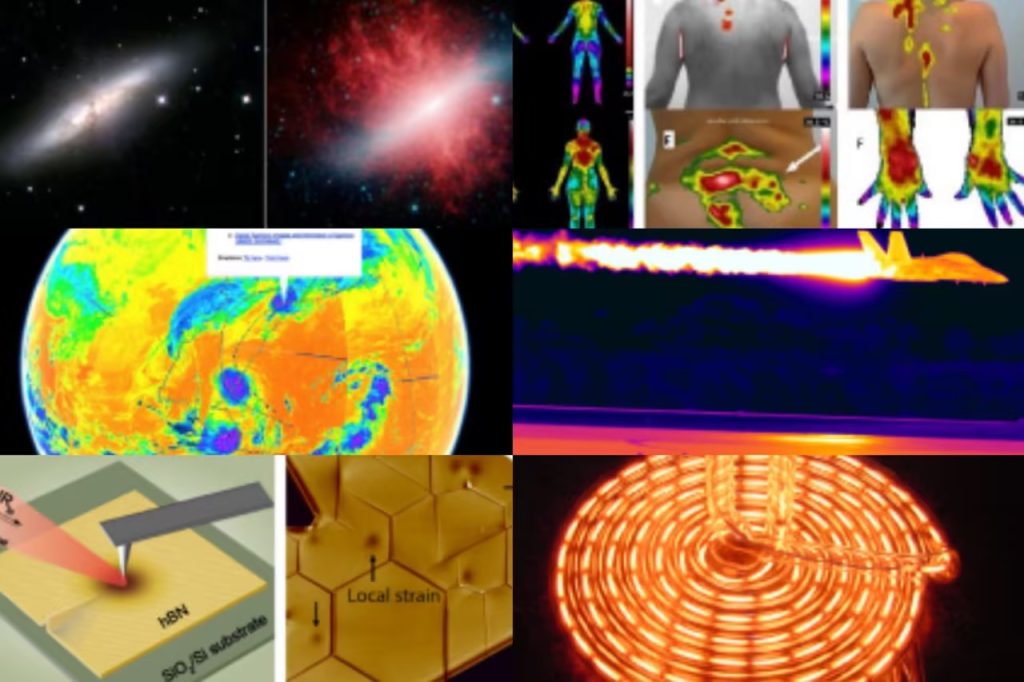
 Thermal imaging is a technique that utilizes the infrared radiation emitted by an object itself to form an image. All objects, due to their temperature above absolute zero, emit an infrared spectrum of varying intensity, which is related to the temperature and material properties of the object. A thermal imaging camera captures this invisible infrared radiation by means of a built-in infrared detector and converts it into an electrical signal.
Thermal imaging is a technique that utilizes the infrared radiation emitted by an object itself to form an image. All objects, due to their temperature above absolute zero, emit an infrared spectrum of varying intensity, which is related to the temperature and material properties of the object. A thermal imaging camera captures this invisible infrared radiation by means of a built-in infrared detector and converts it into an electrical signal.
Each pixel on the detector corresponds to a different intensity of radiant energy received from the target object, which is converted into a corresponding voltage or current signal by the photoelectric effect. These signals go through a series of processes including amplification, digitisation and colour coded electronic circuit to map different temperature values into different colors to produce a visual thermal image.
On the thermal image, the colors represent the temperature distribution on the surface of the object, which can help users analyze the temperature difference and reveal the potential failure of equipment, environmental changes, the health status of organisms and other information, covering a wide range of applications such as industrial inspection, medical diagnosis, military reconnaissance and other fields.
Analysis of heat insulation effect of aero-hair materials
Experimental purpose:
The thermal insulation performance of materials is compared by experiments, and the thermal section design is optimized to reduce heat loss and improve thermal efficiency and safety. Screening of heat-resistant insulation materials can prevent structural failure, promote the development of new materials and the improvement of old materials, and effectively promote the progress of aviation heat protection technology.
The role of infrared thermal imager:
The infrared thermal imager monitors the temperature distribution of the engine surface in real time and visually evaluates the performance of the thermal insulation material. Based on its data, researchers optimize thermal insulation design to improve thermal protection and promote the development of aviation heat management technology.
Laser irradiation temperature monitoring
Experimental purpose:
The ablative efficiency, penetration and destruction mechanism of laser weapon can be evaluated by monitoring the temperature change and the damage degree of metal plate after irradiation. At the same time, such experiments provide a basis for the development of new thermal protective coatings and materials against laser attacks, and improve the ability of military equipment to resist laser attacks.
The role of infrared thermal imager:
The infrared thermal imager can capture and display the temperature distribution of the surface of the metal plate under laser irradiation, accurately reflect the local and overall heat change process, and feedback the transient and steady state temperature of the metal plate in real time, which is of decisive significance for studying the thermal response characteristics of the material and evaluating the influence of laser on the material.
Orbital flash welding experiment
Experimental purpose:
The experiment can further optimize the flash welding process, determine the best welding parameters of rail joints to achieve efficient and stable welding, improve welding quality, efficiency and joint life, reduce maintenance costs and operation interruption risk, and provide key technical support for ensuring the safety and economic benefits of railway rail welding.
The role of infrared thermal imager:
The infrared thermal imager monitors and displays the temperature distribution of the weld and its surroundings in real time to help grasp the change of thermal effect in the experiment. According to the data provided by the thermal imager, the influence of different welding parameters on the size, shape and cooling rate of the heat affected zone can be analyzed, and the welding process can be optimized to improve the joint performance.
Laser cladding experiment
Experimental purpose:
The aim of laser cladding experiment is to develop new materials and optimize process parameters to improve the quality of cladding layer. Through the experiment, the binding effect of the material and the substrate and the corrosion and wear resistance of the cladding layer can be studied, which helps the application of new high-performance materials in actual working conditions and solves the problems of wear and corrosion in industrial production.
The role of infrared thermal imager:
The infrared thermal imager monitors and records the temperature distribution of the cladding area in real time to precisely control the cladding temperature and ensure that the material is properly melted and solidified. By analyzing the data collected by the thermal imager, parameters such as laser power and scanning speed can be precisely adjusted to optimize the quality and performance of the cladding layer.

LASER Photonics China 2025: A new chapter of optoelectronic technology innovation and global cooperation From March 11 to 13, 2025, the most influential event in Asia's optoelectronics industry, LASER Photonics China, will be held in Shanghai New International Expo Center. As the flagship exhibition in China's laser, optics and optoe...